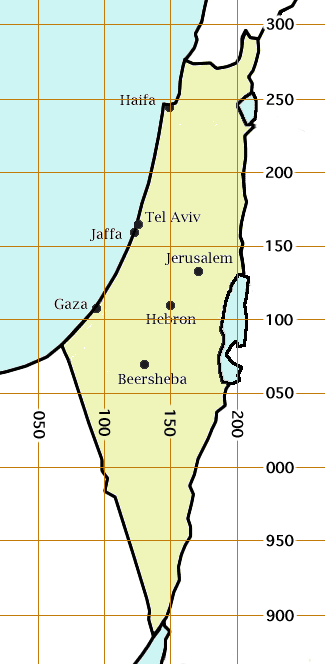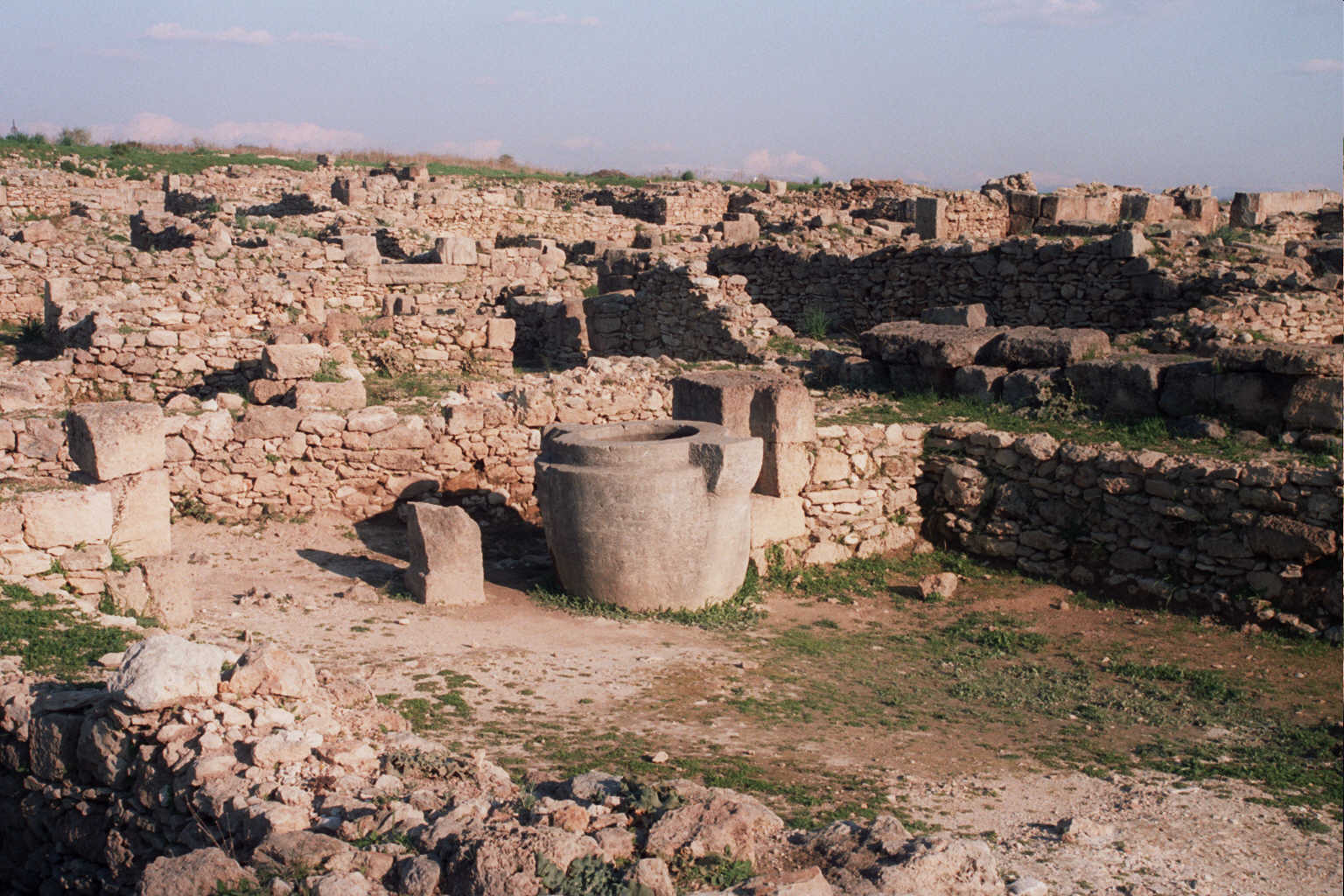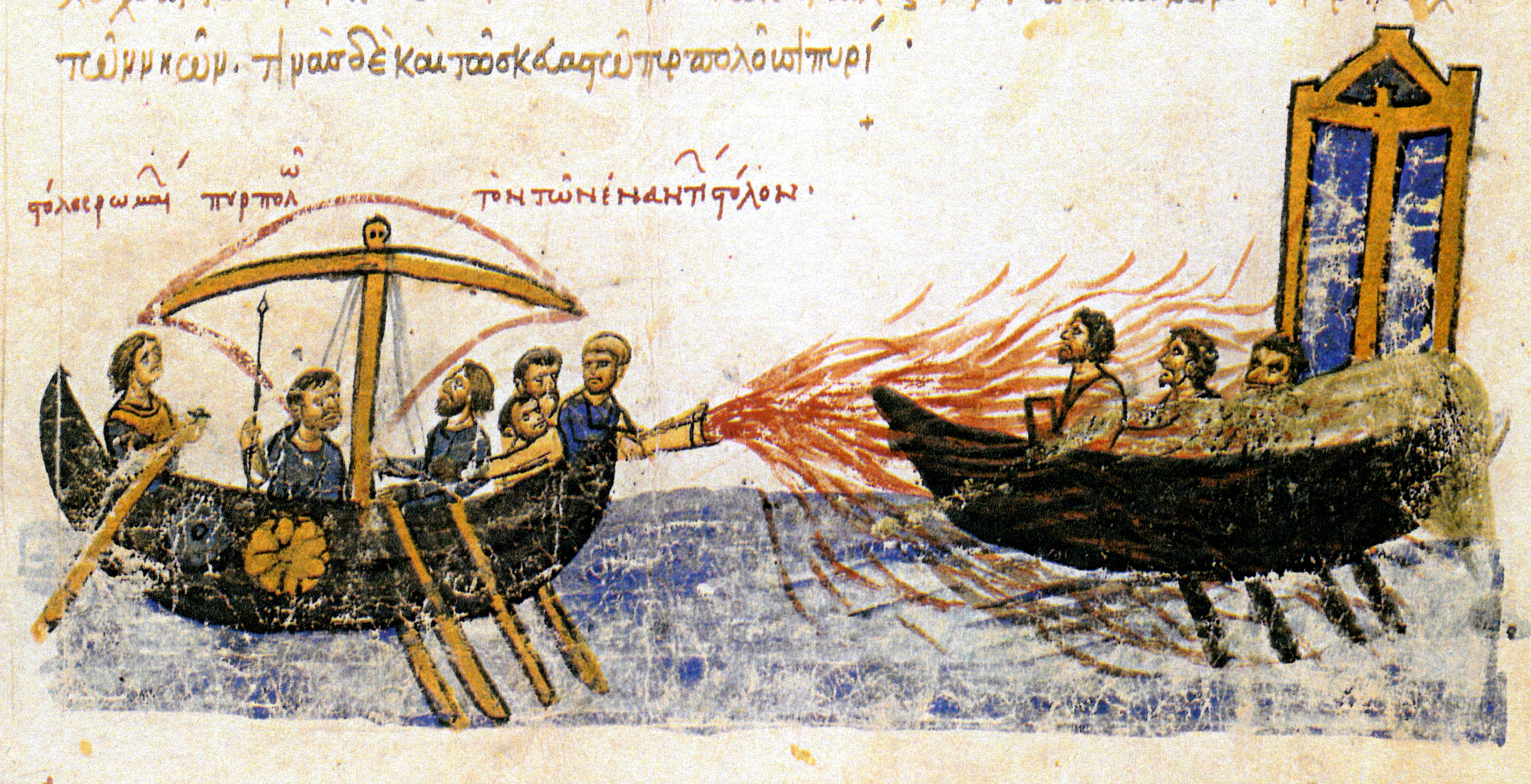|
Apollonia–Arsuf
Apollonia (; ), known in the Early Islamic period as Arsuf () and in the Crusader Kingdom of Jerusalem as Arsur, was an ancient city on the Mediterranean coast of today's Israel. In Israeli archaeology it is known as Tel Arshaf (). Founded by the Phoenicians during the Persian period in the late sixth century BCE, it was inhabited continuously until the Crusader period, through the Hellenistic, Roman, and Byzantine periods, during the latter being renamed to Sozusa (, or ''Sozusa in Palaestina'' to differentiate it from Sozusa in Libya).Cohen, Getzel M., ''The Hellenistic Settlements in Syria, the Red Sea Basin, and North Africa'' (2006)p. 234 It was situated on a sandy area ending towards the sea with a cliff, about south of Caesarea. It fell to the Muslims in 640, was fortified against Byzantine attacks and became known as Arsuf. In 1101 it was conquered by the Crusader Kingdom of Jerusalem, and was a strategically important stronghold in the Third Crusade, during which ... [...More Info...] [...Related Items...] OR: [Wikipedia] [Google] [Baidu] |
Battle Of Arsuf
The Battle of Arsuf took place on 7 September 1191, as part of the Third Crusade. It saw a multi-national force of Crusaders, led by Richard I of England, defeat a significantly larger army of the Ayyubid Sultanate, led by Saladin. Following the Crusaders' capture of Acre, Saladin moved to intercept Richard's advancing army just outside of the city of Arsuf ( in Latin) as it moved along the coast from Acre towards Jaffa. In an attempt to disrupt the cohesion of the Crusader army as they mobilized, the Ayyubid force launched a series of harassing attacks that were ultimately unsuccessful at breaking their formation. As the Crusaders crossed the plain to the north of Arsuf, Saladin committed the whole of his army to a pitched battle. The Crusader army maintained a defensive formation as it marched, with Richard awaiting the ideal moment to mount a counterattack. However, after the Knights Hospitaller launched a charge at the Ayyubids, Richard was forced to commit his entire ... [...More Info...] [...Related Items...] OR: [Wikipedia] [Google] [Baidu] |
Palestine Grid
The Palestine grid was the geographic coordinate system used by the Survey Department of Palestine. The system was chosen by the Survey Department of the Government of Palestine in 1922. The projection used was the Cassini projection, Cassini-Soldner projection. The central Meridian (geography), meridian (the line of longitude along which there is no local distortion) was chosen as that passing through a marker on the hill of Mar Elias Monastery south of Jerusalem. The false origin (zero point) of the grid was placed 100 km to the south and west of the Ali el-Muntar hill that overlooks Gaza City, Gaza city. The unit length for the grid was the kilometre; the British units were not even considered. At the time the grid was established, there was no intention of mapping the lower reaches of the Negev Desert, but this did not remain true. Those southern regions having a negative Easting and northing, northing coordinate then became a source of confusion, which was solved by ad ... [...More Info...] [...Related Items...] OR: [Wikipedia] [Google] [Baidu] |
Palaestina Prima
Palaestina Prima or Palaestina I was a Byzantine province that existed from the late 4th century until the Muslim conquest of the Levant in the 630s, in the region of Palestine. It was temporarily lost to the Sassanid Empire (Persian Empire) in 614, but re-conquered in 628. History The province of Palaestina Prima came into existence in the late 4th century through a series of reforms of the Roman provincial administration which subdivided many provinces into smaller administrative units. The intent of these reforms were to circumscribe the ability of provincial governors with strong garrisons to stage revolts and to improve efficiency by reducing the area controlled by each governor. Provinces were clustered into regional groups called ''dioceses''. Thus, the province of Syria Palaestina and neighboring regions were organized into the provinces ''Palaestina Prima'', ''Palaestina Secunda'', and '' Palaestina Tertia'' or ''Palaestina Salutaris'' (First, Second, and Third Palestin ... [...More Info...] [...Related Items...] OR: [Wikipedia] [Google] [Baidu] |
Canaanite Religion
Canaanite religion or Syro-Canaanite religions refers to the myths, cults and ritual practices of people in the Levant during roughly the first three millennia BC. Canaanite religions were polytheistic and in some cases monolatristic. They were influenced by neighboring cultures, particularly ancient Egyptian and Mesopotamian religious practices. The pantheon was headed by the god El and his consort Asherah, with other significant deities including Baal, Anat, Astarte, and Dagon. Canaanite religious practices included animal sacrifice, veneration of the dead, and the worship of deities through shrines and sacred groves. The religion also featured a complex mythology, including stories of divine battles and cycles of death and rebirth. Archaeological evidence, particularly from sites like Ugarit, and literary sources, including the Ugaritic texts and the Hebrew Bible, have provided most of the current knowledge about Canaanite religion. Sources and history Knowledge ... [...More Info...] [...Related Items...] OR: [Wikipedia] [Google] [Baidu] |
Interpretatio Graeca
, or "interpretation by means of Greek [models]", refers to the tendency of the ancient Greeks to identify foreign deities with their own gods. It is a discourse used to interpret or attempt to understand the mythology and religion of other cultures; a Comparative religion, comparative methodology using Religion in ancient Greece, ancient Greek religious concepts and practices, List of Greek deities, deities, and Greek mythology, myths, Comparative mythology, equivalencies, and shared characteristics. The phrase may describe Greek efforts to explain others' beliefs and myths, as when Herodotus describes ancient Egyptian religion, Egyptian religion in terms of perceived Greek analogues, or when Dionysius of Halicarnassus and Plutarch document Cult (religious practice), Roman cults, Roman temple, temples, and practices under the names of equivalent Greek deities. may also describe non-Greeks' interpretation of their own belief systems by comparison or assimilation with Greek model ... [...More Info...] [...Related Items...] OR: [Wikipedia] [Google] [Baidu] |
Charles Simon Clermont-Ganneau
Charles Simon Clermont-Ganneau (19 February 1846 – 15 February 1923) was a noted French Orientalist and archaeologist. Biography Clermont-Ganneau was born in Paris, the son of Simon Ganneau, a sculptor and mystic who died in 1851 when Clermont-Ganneau was five, after which Théophile Gautier took him under his wing. After an education at the Institut national des langues et civilisations orientales, he entered the diplomatic service as ''dragoman'' to the consulate at Jerusalem, and afterwards at Constantinople. He laid the foundation of his reputation by his involvement with the Mesha Stele (Moabite Stone), which bears the oldest Semitic inscription known. In 1871, Clermont-Ganneau identified the biblical city of Gezer (Joshua 16:11) with that of Abu Shusha, formerly known as ''Tell el Jezer''. In the same year he discovered the Temple Warning inscription in Jerusalem. In 1874 he was employed by the British government to take charge of an archaeological expedition to P ... [...More Info...] [...Related Items...] OR: [Wikipedia] [Google] [Baidu] |
Common Era
Common Era (CE) and Before the Common Era (BCE) are year notations for the Gregorian calendar (and its predecessor, the Julian calendar), the world's most widely used calendar era. Common Era and Before the Common Era are alternatives to the original Anno Domini (AD) and Before Christ (BC) notations used for the same calendar era. The two notation systems are numerically equivalent: " CE" and "AD " each describe the current year; "400 BCE" and "400 BC" are the same year. The expression can be traced back to 1615, when it first appears in a book by Johannes Kepler as the (), and to 1635 in English as " Vulgar Era". The term "Common Era" can be found in English as early as 1708, and became more widely used in the mid-19th century by Jewish religious scholars. Since the late 20th century, BCE and CE have become popular in academic and scientific publications on the grounds that BCE and CE are religiously neutral terms. They have been promoted as more sensitive to non-Christia ... [...More Info...] [...Related Items...] OR: [Wikipedia] [Google] [Baidu] |
Tel Aviv
Tel Aviv-Yafo ( or , ; ), sometimes rendered as Tel Aviv-Jaffa, and usually referred to as just Tel Aviv, is the most populous city in the Gush Dan metropolitan area of Israel. Located on the Israeli Mediterranean coastline and with a population of 495,600, it is the economic and technological center of the country and a global high tech hub. If East Jerusalem is considered part of Israel, Tel Aviv is the country's second-most-populous city, after Jerusalem; if not, Tel Aviv is the most populous city, ahead of West Jerusalem. Tel Aviv is governed by the Tel Aviv-Yafo Municipality, headed by Mayor Ron Huldai, and is home to most of Israel's foreign embassies. It is a beta+ world city and is ranked 53rd in the 2022 Global Financial Centres Index. Tel Aviv has the third- or fourth-largest economy and the largest economy per capita in the Middle East. Tel Aviv is ranked the 4th top global startup ecosystem hub. The city currently has the highest cost of living in the wor ... [...More Info...] [...Related Items...] OR: [Wikipedia] [Google] [Baidu] |
Herzliya
Herzliya ( ; , / ) is an affluent List of Israeli cities, city in the Israeli coastal plain, central coast of Israel, at the northern part of the Tel Aviv District, known for its robust start-up and entrepreneurial culture. In it had a population of . Named after Theodor Herzl, the founder of modern Zionism, Herzliya covers an area of . Its western, beachfront area is called Herzliya Pituah and is one of Israel's most affluent neighborhoods and home to numerous embassies, ambassadors' residences, companies headquarters, and houses of prominent Israeli business people. History Herzliya, named after Theodor Herzl, was founded in 1924 as a semi-cooperative farming community (moshava) with a mixed population of new immigrants and veteran residents. During that year, 101 houses and 35 cowsheds were built there, and the village continued to grow. The 1931 census of Palestine, 1931 census recorded a population of 1,217 inhabitants, in 306 houses.Mills, 1932, p13/ref> Israeli Declarati ... [...More Info...] [...Related Items...] OR: [Wikipedia] [Google] [Baidu] |
Mamluk Sultanate (Cairo)
The Mamluk Sultanate (), also known as Mamluk Egypt or the Mamluk Empire, was a state that ruled medieval Egypt, Egypt, the Levant and the Hejaz from the mid-13th to early 16th centuries, with Cairo as its capital. It was ruled by a military caste of mamluks (freed slave soldiers) headed by a sultan. The sultanate was established with the overthrow of the Ayyubid dynasty in Egypt in 1250 and was Ottoman–Mamluk War (1516–1517), conquered by the Ottoman Empire in 1517. Mamluk history is generally divided into the Turkic peoples, Turkic or Bahri Mamluks, Bahri period (1250–1382) and the Circassians, Circassian or Burji Mamluks, Burji period (1382–1517), called after the predominant ethnicity or corps of the ruling Mamluks during these respective eras. The first rulers of the sultanate hailed from the mamluk regiments of the Ayyubid sultan as-Salih Ayyub (), usurping power from his successor in 1250. The Mamluks under Sultan Qutuz and Baybars Battle of Ain Jalut, routed the ... [...More Info...] [...Related Items...] OR: [Wikipedia] [Google] [Baidu] |
Third Crusade
The Third Crusade (1189–1192) was an attempt led by King Philip II of France, King Richard I of England and Emperor Frederick Barbarossa to reconquer the Holy Land following the capture of Jerusalem by the Ayyubid sultan Saladin in 1187. For this reason, the Third Crusade is also known as the Kings' Crusade. It was partially successful, recapturing the important cities of Acre and Jaffa, and reversing most of Saladin's conquests, but it failed to recapture Jerusalem, which was the major aim of the Crusade and its religious focus. After the failure of the Second Crusade of 1147–1149, the Zengid dynasty controlled a unified Syria and engaged in a conflict with the Fatimid rulers of Egypt. Saladin ultimately brought both the Egyptian and Syrian forces under his own control, and employed them to reduce the Crusader states and to recapture Jerusalem in 1187. Spurred by religious zeal, King Henry II of England and King Philip II of France (later known as "Philip Augustus") e ... [...More Info...] [...Related Items...] OR: [Wikipedia] [Google] [Baidu] |
Arab–Byzantine Wars
The Arab–Byzantine wars or Muslim–Byzantine wars were a series of wars from the 7th to 11th centuries between multiple Arab dynasties and the Byzantine Empire. The Muslim Arab Caliphates conquered large parts of the Christian Byzantine empire and unsuccessfully attacked the Byzantine capital of Constantinople. The frontier between the warring states remained almost static for three centuries of frequent warfare, before the Byzantines were able to recapture some of the lost territory. The conflicts began during the early Muslim conquests under the expansionist Rashidun Caliphate, part of the initial spread of Islam. In the 630s, Rashidun forces from Arabia attacked and quickly overran Byzantium's southern provinces. Muslim conquest of the Levant, Syria was captured in 639 and Arab conquest of Egypt, Egypt was conquered in 642. The Exarchate of Africa was Muslim conquest of the Maghreb, gradually captured between 647 and 670. From the 650s onwards, Arab navies entered the Medit ... [...More Info...] [...Related Items...] OR: [Wikipedia] [Google] [Baidu] |







